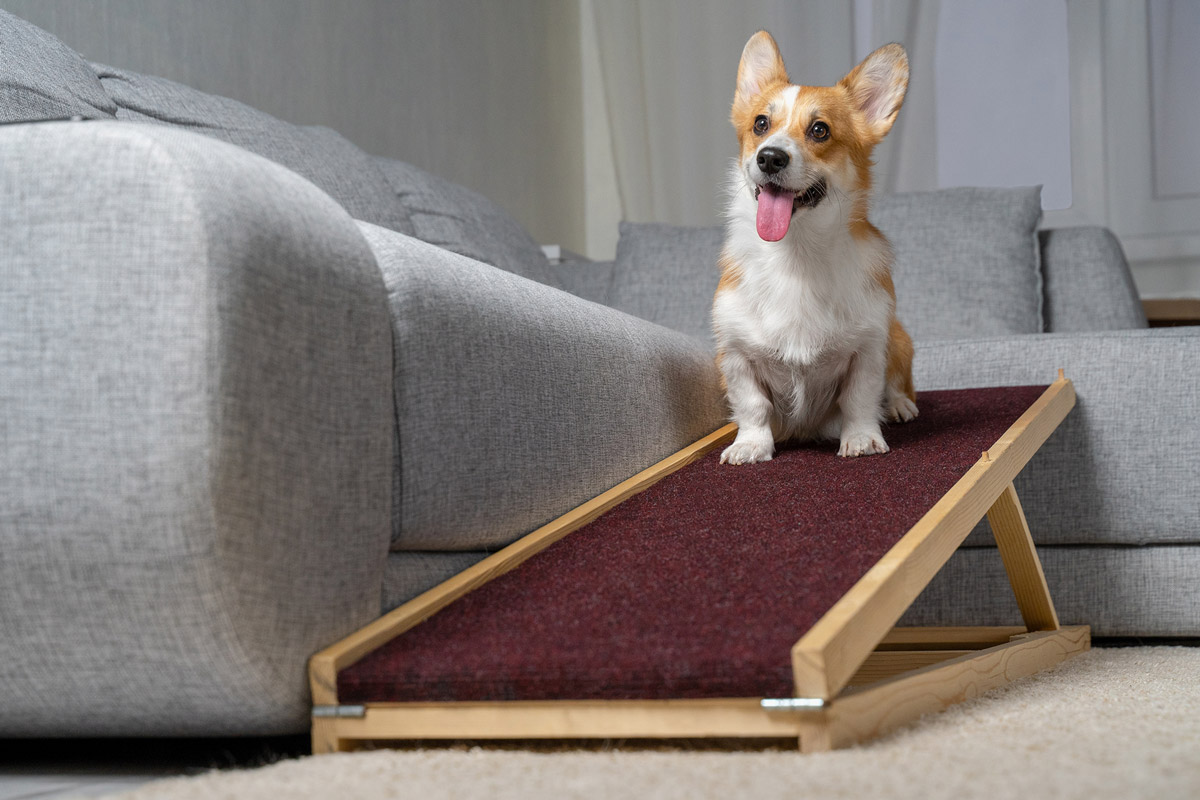Cover image source: Karin Hiselius
Is your dog not running as much as before? Hesitating to climb steps? Taking a long time to get up after lying down? Perhaps your dog might be suffering from osteoarthritis (OA), the prevalent cause of lameness and the most common joint disease in dogs.
However, unlike humans, where OA is usually related to ageing and ‘wear and tear’ of joints, OA in dogs usually has a specific underlying cause and is therefore often seen earlier in life.
While canine osteoarthritis is an irreversible, progressive disorder, identifying OA early and implementing appropriate management of this condition can help to slow down the progression and allow your dog to lead a happy, pain-free, and quality life. Read on to find out how!
What is osteoarthritis?

A degenerative joint disease, OA is characterised by the thinning of the joint cartilage, changes in the joint capsule, a build-up of fluid in the joint (joint swelling), and the formation of bony outgrowths around the joints.
These changes result in inflammation, pain, and restricted flexibility of the affected joints — most commonly the limb joints, less commonly the lower back joints — which in turn leads to reduced movement and activity and the wasting of the muscles supporting the joint. The afflicted joints also become unstable, making movement all the more painful and unsteady.
The end result of all these is a reduced quality of life overall and weight gain, which puts further stress on affected joints.
Osteoarthritis is not “old age leg weakness”
Not to be confused with sarcopenia, which is a condition where healthy dogs (and cats) lose lean muscle as they age and as a result, develop weakness in the limbs, OA is painful for the pet.
Risk factors
Studies have shown that OA occurs in 6% of dogs and 20% in dogs aged 10 or older. However, there are some factors that can make your dog more susceptible than others. These include belonging to a larger breed such as a Golden Retriever or German Shepherd, being obese, or having injuries such as ligament tears or fractures.
Some forms of OA are also inherited, with breeds such as German Shepherds, Labrador Retrievers, Golden Retrievers, and Great Danes being genetically predisposed. Inherited OA is often seen in elbow joints, knee joints, and hip joints. Lameness due to inherited OA may also show up in puppyhood.
If you know that your dog might be inclined to developing OA, make sure to bring your pooch for regular checkups in order to spot symptoms as early as possible!
Your dog may be suffering in silence
OA can be hard to identify in its early stages and oftentimes, its symptoms do not become visibly apparent until the affected joint is severely impacted. Because your dog can’t speak, it’s also very common for owners to be unaware of their dog’s pain until it becomes severe.
However, that doesn’t mean that it is completely unidentifiable! If you’re not sure if your dog is suffering from OA, keep your eyes peeled for these early signs:
- Slowness in getting up from lying down
- Moving slower
- Reluctance to jump, run, play, and climb stairs as before
- Difficulty in getting into position to urinate or defecate
- Weight gain
- Stiffness
- Irritability
- Pain when touched
- Loss of interest in playing and interacting
- Loss of muscle mass over spine and limbs.
Most importantly, have your suspicions addressed by having your dog examined at the veterinarian.
The importance of early diagnosis and prevention
Approximately 50% of dogs with OA are diagnosed later in life. However, early prevention can help to minimise lifetime discomfort and slow degenerative changes, plus offer more treatment options than when the OA becomes severe.
These measures include weight loss to reach its ideal weight, dietary changes, and non-impact exercises such as hydrotherapy and massages to strengthen the muscles that support the joints. You can also start your dog on a joint supplement that contains ingredients that have been clinically proven to reduce inflammation, such as Antinol® and Omega-3 fatty acids.
Treatment and management

A dog in hydrotherapy
In the case of addressing existing OA symptoms, treatment usually focuses on slowing down the progression of the condition through a combination of medical and non-medical treatments. Some of the latter include hydrotherapy, laser therapy, physiotherapy, and acupuncture. In severe cases, surgery might be needed to replace the joint or remove damaged tissue from it.
Supporting your dog through osteoarthritis

Source: paw.com
While OA is a painful and incurable condition, it can be managed. Implementing preventive measures soon after early diagnosis will provide your dog with more years of pain-free mobility, and more years of meaningful companionship with you.
The best way to do so is to always be on the lookout for signs of joint pains and help your dog remain as healthy as possible by maintaining a good diet and adding useful accessories to your home. Orthopaedic beds and non-slip dog stairs and ramps are just some of the things that can make your dog’s life as comfortable as possible!
This article was written with the professional veterinary advice from Dr Lennie Lee of The Animal Clinic.














